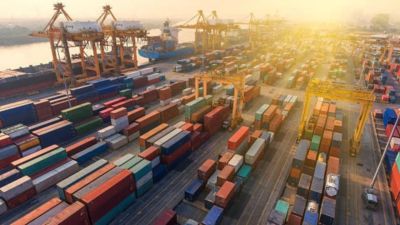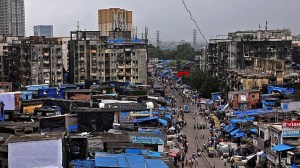WPI inflation hits 7-yr low of 3.48 per cent in May
Wholesale inflation rate had stood in double digits during April 2021-September 2022, with inflation rate at 16.63 per cent in May 2022. Retail inflation, based on the more closely-monitored Consumer Price Index (Combined), had also declined to a 25-month low of 4.25 per cent in May.
 Core WPI inflation (non-food manufacturing) slipped deeper into negative territory at (-)2.2 per cent in May as against (-) 1.8 per cent in April, led by decline in basic metals, textiles and chemicals, IDFC First Bank said in a note.
Core WPI inflation (non-food manufacturing) slipped deeper into negative territory at (-)2.2 per cent in May as against (-) 1.8 per cent in April, led by decline in basic metals, textiles and chemicals, IDFC First Bank said in a note. Wholesale Price Index-based inflation rate fell to a seven-and-half year low of (-)3.48 per cent in May on the back of a high base effect, easing global commodity prices, food, fuel, primarily articles and manufactured items, data released by the Ministry of Commerce and Industry on Wednesday showed. This is the second consecutive month of WPI in the negative territory of the deflationary zone, strengthening expectations of a similar impact on the retail inflation with a lag resulting in the Reserve Bank of India (RBI) to maintain its rate pause stance.
Wholesale inflation rate had stood in double digits during April 2021-September 2022, with inflation rate at 16.63 per cent in May 2022. Retail inflation, based on the more closely-monitored Consumer Price Index (Combined), had also declined to a 25-month low of 4.25 per cent in May.
In May, wholesale inflation in food articles eased to 1.51 per cent from 3.54 per cent in April. Inflation rate for vegetables recording declined to (-) 20.12 per cent, while for potato and onion was (-)18.71 per cent and (-) 7.25 per cent, respectively. However, the inflation rate for pulses increased to 5.76 per cent, while for wheat, was at 6.15 per cent. Fuel and power basket inflation eased to (-) 9.17 per cent in May against 0.93 per cent in April
Experts said though prices have eased, the delayed pass-through to retail side may result in a wide gap between the two sets of inflation prints. “Wholesale prices fell further last month, as pressures eased across food, fuel and core. Falling commodity prices are reducing input costs for producers, but delayed pass-through to retail prices means the gap between CPI and WPI inflation has widened,” Rahul Bajoria, MD & Head of EM Asia (ex-China) Economics, Barclays, said.
While inflation is expected to moderate in the near term, some recent indicators have pointed towards re-emergence of pricing power, which may result in a slower pace of core retail inflation – the non-food, non-fuel segment of inflation. “Easing wholesale price pressures have also supported the climbdown in core inflation as input costs have come down. However, PMI data for output prices has shown an acceleration, which may be indicative of some re-emergence of pricing power. Thus, the slowdown in core CPI inflation will likely only be gradual. Accordingly, we see the gap between CPI and WPI inflation widening. Based on the governor’s statement at the June MPC meeting, we think the RBI will want to see headline (and ideally core) CPI inflation moving towards the 4% target on a durable basis, before considering rate cuts,” Bajoria said.
Core WPI inflation (non-food manufacturing) slipped deeper into negative territory at (-)2.2 per cent in May as against (-) 1.8 per cent in April, led by decline in basic metals, textiles and chemicals, IDFC First Bank said in a note. “Industrial raw material costs (calculated as non-food articles, minerals, fuels, electricity etc) declined sharply, lower by 8% YoY in May v/s decline of 1.4% in April. Importantly, after a gap of 26 months industrial raw material inflation is lower than non-food manufacturing inflation,” it said. With WPI constituting nearly 70 per cent weight in GDP deflator, the moderation in both WPI and CPI inflation, indicate that GDP deflator growth is likely to slow further in FY24, it said. “We see down-side risk to FY24 nominal GDP growth assumed in the Union Budget of 10.8% (over FY23 actuals). Nominal GDP growth in FY24 could be lower than 9%, due to slower GDP deflator growth. The softer nominal GDP growth represents fiscal slippage risks, as tax revenues could undershoot Budget Estimate. Expenditure moderation will be required to attain the Centre’s FY24 fiscal deficit target of 5.9% of GDP,” it said.





- 01
- 02
- 03
- 04
- 05


























